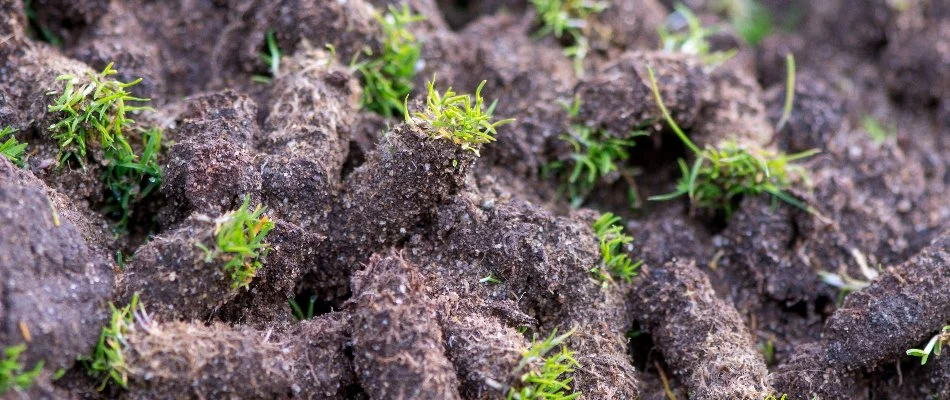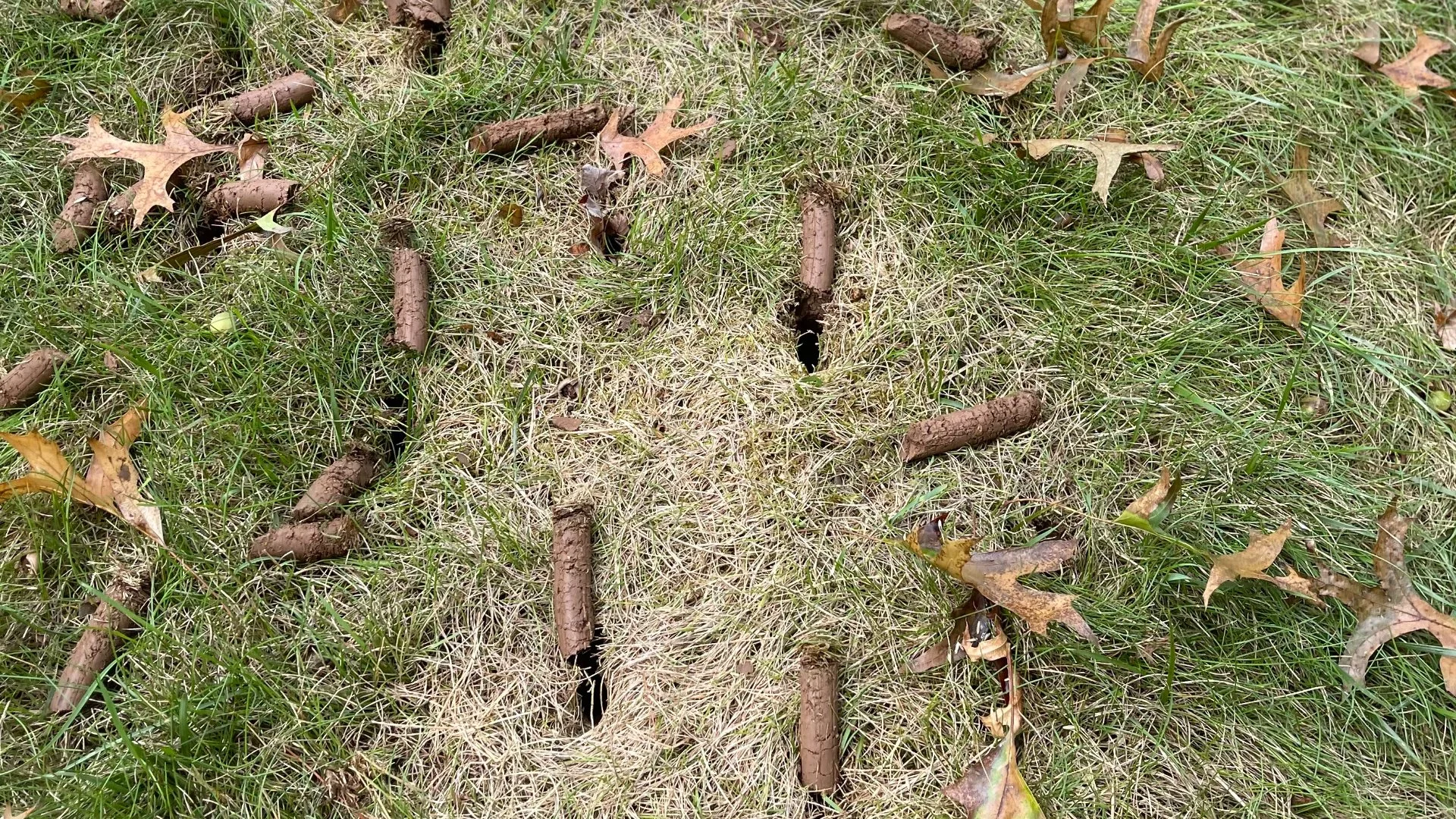Core aeration is a lawn care service that is commonly performed in Pennsylvania that involves pulling plugs of soil from the ground to create channels where nutrients and other resources can easily flow to reach the roots of your grass. After this procedure, there will be clumps of soil on your lawn, which is completely normal. It's best to leave these cores alone to decompose naturally. That way, the valuable nutrients they contain will be returned back to your soil. If you don't like the appearance of the cores, you can rake or mow over them to speed up their decomposition process. However, it is not recommended to remove them altogether because your lawn won't benefit from the nutrients they contain.
What are the cores that appear on your lawn after core aeration?

After having your lawn aerated, you may notice small, black, cylindrical-shaped objects scattered across your yard. These cylinders are called cores, and they are what remains after the core aeration process has been completed. Cores are cylinders of soil that were pulled from the ground during the aeration process. The purpose of core aeration is to loosen compacted soil by pulling plugs of soil from the ground so nutrients and other resources can more easily reach the roots of your grass. When the company performing the aeration process pulls out these cores, they will leave the cores on your lawn.
What should you do with the soil cores that remain on your lawn after aeration?
When the core aeration process is complete, it is recommended that you leave the cores on your lawn to decompose naturally. That's because the cores contain many essential nutrients such as nitrogen, phosphorus, and potassium. Each of these nutrients plays an important role in improving the overall health of your lawn. As the cores decompose, they will gradually release these nutrients back into your soil. This will help improve the overall health of your turf while also enhancing its vibrant green color.
You can rake or mow over the soil cores if you don't like how they look.
While it's recommended to leave the cores of soil on your lawn alone to break down naturally, there are some things you can do to speed up the decomposition process if you really don't like how they look. For one, you can break them down with a rake into smaller pieces, which will help them decompose faster. You can also mow over them, which will also break them down into smaller pieces so that they can decompose more quickly. While both of these option requires some work on your end, they will allow you to speed up the decomposition process while also allowing your lawn to benefit from the nutrients they contain.
Can you completely remove the cores of soil from your lawn?
Although it is possible to completely remove the cores from your lawn, it is not recommended to do so. Removing the cores means your lawn will not have the chance to absorb the nutrients they contain. However, if you truly can't stand the way they look, you can remove them, but your lawn won't thank you for it!
Give us a call today to schedule our core aeration service!
Here at Green Grass Lawncare, Inc., we offer an exceptional core aeration service to commercial and residential properties, as well as HOAs, in Telford, Souderton, Harleysville, Quakertown, Perkasie, Doylestown, PA, and nearby areas. Our professionals use top-of-the-line equipment to pull plugs of soil from the ground to loosen compacted soil and make it easier for nutrients and other resources to reach the roots of your grass. Call us today at (215) 723-1034 to schedule our core aeration service. We look forward to working with you!



Comments (0)
Thanks for your comment!
Thanks for your feedback! Your comments have been successfully submitted! Please note, all comments require admin approval prior to display.
Error submitting comment!
There is a problem with your comment, please see below and try again.